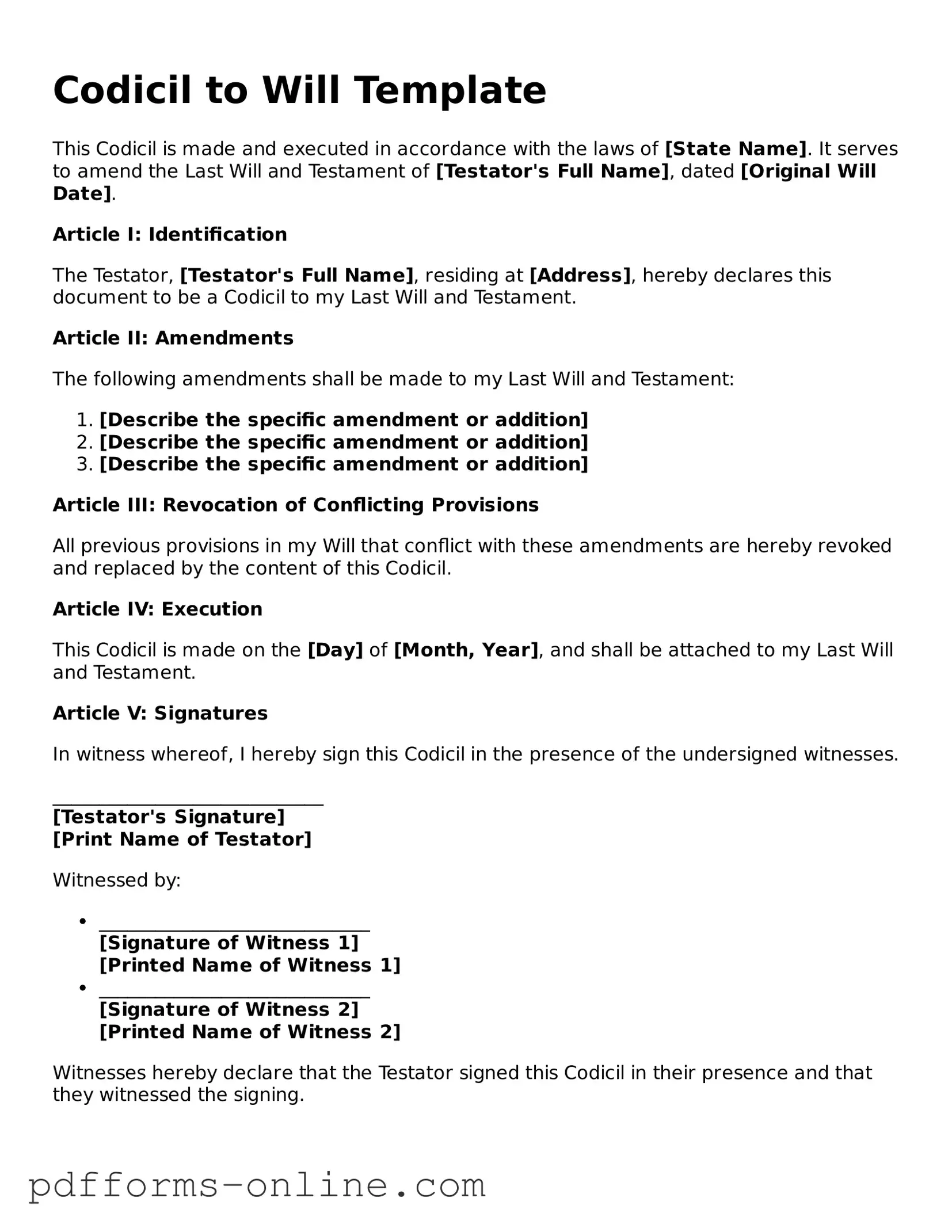The Codicil to Will form is similar to the Last Will and Testament, as both documents serve the purpose of outlining an individual's wishes regarding the distribution of their estate after death. A Last Will and Testament is a comprehensive legal document that details the allocation of assets, guardianship of minors, and other final wishes. A codicil acts as an amendment to the will, allowing individuals to make changes without drafting an entirely new document. This flexibility can be essential for adapting to changes in personal circumstances or preferences.
Another document akin to the Codicil to Will is the Revocable Living Trust. Like a codicil, a living trust allows individuals to modify their estate plans as needed. While a will takes effect upon death, a living trust can manage assets during a person’s lifetime and distribute them after death. Both documents can work in tandem, with a codicil modifying the will while the trust provides ongoing management of assets.
The Power of Attorney is also comparable to the Codicil to Will. While a codicil addresses the distribution of assets after death, a Power of Attorney designates an individual to make decisions on behalf of another person during their lifetime, particularly in financial or medical matters. Both documents empower individuals to express their wishes and ensure that their preferences are honored, albeit in different contexts.
Understanding the importance of a Last Will and Testament form is crucial for effective estate planning. This document not only delineates how assets should be distributed after death but also allows individuals to express their final wishes clearly, thereby helping to prevent disputes among beneficiaries.
Another similar document is the Advance Healthcare Directive. This document outlines an individual's preferences regarding medical treatment and end-of-life care. Like a codicil, it reflects personal choices and can be updated as circumstances change. Both documents emphasize the importance of individual autonomy and the right to make decisions about one's own life and legacy.
The Letter of Instruction shares similarities with the Codicil to Will. While a codicil is a formal legal amendment, a Letter of Instruction provides informal guidance to heirs regarding personal wishes, funeral arrangements, and other matters not covered in the will. This document can serve as a complement to a codicil, offering additional context and clarity for loved ones.
The Estate Inventory is another document that parallels the Codicil to Will. An estate inventory lists all assets owned by an individual at the time of death. This document aids in the administration of the estate and can be updated as changes occur. While a codicil modifies the distribution of assets, the inventory provides a comprehensive overview of what is to be distributed.
The Declaration of Trust is also similar to a codicil, as it can modify how assets are held and managed. This document outlines the terms under which a trust operates, including the roles of trustees and beneficiaries. Like a codicil, it can be amended to reflect changes in the individual’s intentions or circumstances.
Another related document is the Beneficiary Designation Form. This form allows individuals to specify who will receive certain assets, such as life insurance policies or retirement accounts, upon their death. While a codicil amends a will, a beneficiary designation form can directly affect the distribution of specific assets, ensuring that wishes are clearly communicated.
The Prenuptial Agreement can also be compared to the Codicil to Will. While a codicil addresses changes to a will, a prenuptial agreement outlines the division of assets and responsibilities in the event of divorce or separation. Both documents reflect personal choices and intentions, allowing individuals to establish clear expectations for their future.
Lastly, the Trust Amendment is akin to a codicil, as it modifies the terms of an existing trust. Just as a codicil allows for changes to a will, a trust amendment can adjust the beneficiaries, terms, or management of the trust. Both documents facilitate the ongoing evolution of an individual's estate plan, ensuring it remains aligned with their current wishes.
